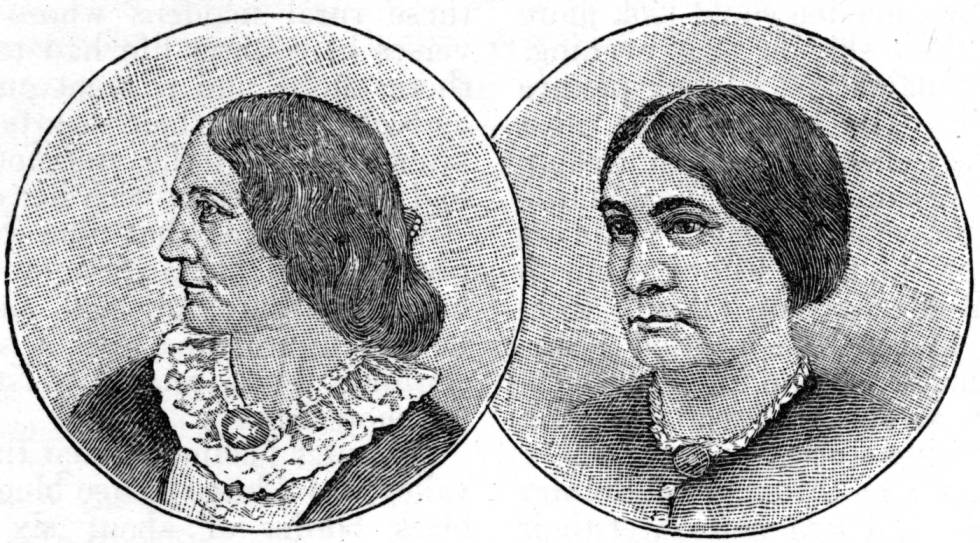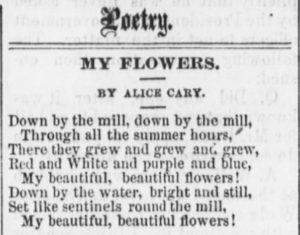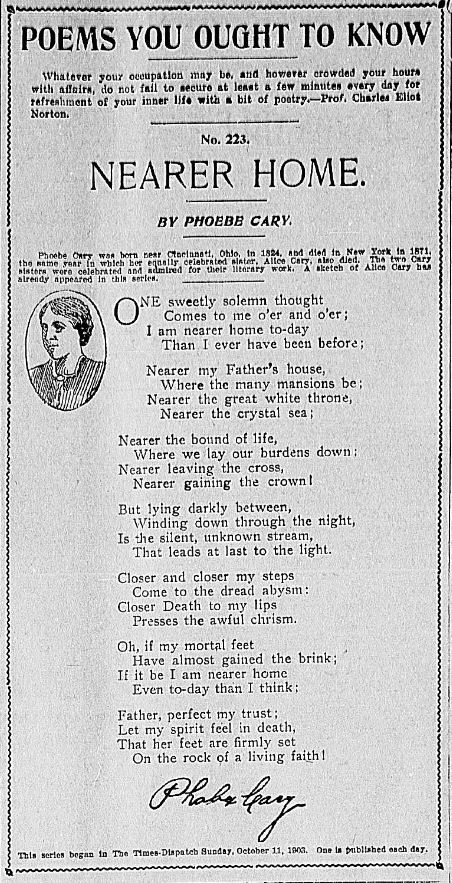Sister Poets–Alice and Phoebe Cary

Alice (1820-1871) and Phoebe Cary (1824-1871) were 19th century American poets who grew up on Clovernook Farm near Cincinnati, Ohio. Their parents, Robert and Elizabeth Jessup Cary, raised them in a Universalist household, engendering in them progressive ideas regarding social reform and justice which would be reflected in their later writing and activism.

Although they lacked formal education, their mother encouraged their interest in literature and writing, and Alice published her first poem, “The Child of Sorrow,” in The Sentinel, Cincinnati’s Universalist newspaper, in 1838. Both sisters continued to publish locally over the next decade until 1847 when Alice began to write for the National Era, Washington D.C.’s abolitionist newspaper. Eventually they gained the attention and admiration of several well-known writers, including Edgar Allan Poe, Horace Greeley, John Greenleaf Whittier and Rufus Wilmot Griswold. In 1849, both women contributed to Griswold’s The Female Poets of America Anthology, and the next year, Poems of Alice and Phoebe Cary was published. Their success allowed them to move to New York City.
Alice and Phoebe supported themselves through writing poetry and prose for periodicals and independent publications, such as Harper’s and Atlantic Monthly. Their home on Twentieth Street became “the centre of one of the choicest and most cosmopolitan circles in New York” (p. 15). Writers, artists, reformers, clergymen, philanthropists and others gathered at their Sunday evening salons. Among the more well-known guests were P.T. Barnum, Elizabeth Cady Stanton and William Lloyd Garrison.

Making a living as a writer was not easy, and Alice worked tirelessly to do so. While her work remained popular with the public, it began to lose some of its critical acclaim as she published more frequently. In addition to poetry and articles, she published several books themed around her childhood in southwestern Ohio, including Clovernook: or, Recollections of Our Neighborhood in the West(1852) and Pictures of Country Life(1859) as well as novels and short stories. Phoebe was less prolific and her work was often more inspirational in nature, and could sometimes be found in church hymnals. One of her most famous poems, “Nearer Home”, was set to music in 1876 and became one of the most widely-sold pieces of sheet music during that time. At times, both sisters’ work touched on the theme of equality for women, an issue about which they were both passionate. Alice briefly served as president of Sororis, a New York woman’s club, and Phoebe spent time as editor of Revolution, Susan B. Anthony’s newspaper.
Toward the end of their lives, Alice became an invalid and relied on Phoebe to care for her and their house while she continued to write. The Cary sisters died months apart in 1871, Alice from tuberculosis and Phoebe from hepatitis. They are buried in Greenwood Cemetery, Brooklyn, New York. Today, their childhood home, known as Cary Cottage, still stands and is part of the Clovernook Center for the Blind & Visually Impaired in North College Hill, Ohio. To learn more about Alice and Phoebe Cary’s lives and contributions to American society and literature, search our digital newspaper collections on Chronicling America and Ohio Memory.
Further reading: The Poetical Works of Alice and Phoebe Cary with a Memorial of Their Lives by Mary Clemmer (1876)
Thanks to Jenni Salamon, Coordinator for the Ohio Digital Newspaper Program, for this week’s post!



Leave a Reply
You must be logged in to post a comment.